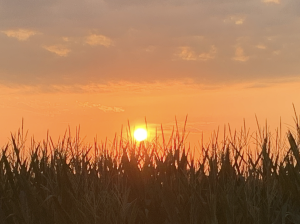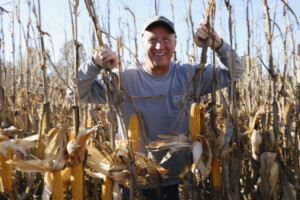Clocks turned back one hour in most of the country over the weekend (a notable exception was Arizona). There’s a popular belief that daylight savings time was intended for farmers. Agriculturists are, of course, infamous early risers, said to awaken with the roosters to do their daily chores. Contrary to popular belief, the idea to “fall back” was not intended for farmers. In fact, the agriculture industry lobbied against it in 1919. Farmers prefer to have their day dictated by the sun, not the clock. Livestock are creatures of habit and are intolerant of disruptions in their milking and feeding schedules. Nowadays, farm machines light up the night like sports stadiums, so fieldwork is not an issue. So, what actually prompted our biannual clock resetting? The concept originated in Germany during World War I as a move to conserve coal usage. The USA adopted it a year later to conserve energy, thinking one less hour of darkness equals less time the lights need to be turned on.
No amusement park can boast a ride as wild as the fertilizer market has been on during the past two years. Those massive price fluctuations have impacted fertilizer usage, application patterns and sadly in some parts of the world, food scarcity. But the ride may be slowing down, as fertilizer prices are showing signs of returning to normal (or whatever normal is these days). According to Rabobank, fertilizer affordability is heading into positive territory, based on their index. Wholesale ammonia prices are now down 50% year-over-year, while potash is down 44%. Overall, world fertilizer usage is expected to rise 4-5% in 2024.
Managing costs has long been the trick to farming. Crop inputs are the biggest line items among direct costs, which farmers typically have greater flexibility to manage, especially in the present and short term. This century, direct costs for corn production have been increasing steadily at an average rate of 7%. This season, direct costs spiked to a record average of $579 in Illinois, much on the heels of fertilizer prices. But 2024 may offer much needed relief for farmers as direct cost budgets projects $527 in 2024. Declining fertilizer prices are driving down overall direct costs in 2024, projected to drop to $180/A vs $250/A in 2023. Crop nutrient costs figure to represent 17% of crop revenue in 2024, down from 23% in 2023. But while fertilizer is dropping, pesticide costs have nearly doubled this decade, soaring to a projected record $140/A, which would represent 13% share of crop revenue. Weed resistance is the big driver, along with emerging disease spectrums and insect resistance. Seed costs should set a record $126/A in 2024. While declining direct costs are a welcome relief, 2024 is still projected to represent the third-highest level in history, and sixth highest this century in terms of % share of revenue. Meanwhile, interest rates are at the highest levels this century and corn prices have dropped $2 since the start of 2023.

What does a star NFL quarterback do during a bye week? If he’s engaged to an Iowa farm girl, he goes to work on her parent’s farm. That’s what current 49ers QB and Iowa State alum Brock Purdy did this past week. Purdy is already a fan-favorite of Midwesterners due to his strong faith and values, work ethic and determination after being the final player selected in the 2022 NFL draft. His time spent on the combine only figures to enhance his reputation.

Can you tell who in the neighborhood works for Huma?

Related Posts

This Week in Ag #32
Everyone remembers where they were on September 11, 2001. One of my most vivid memories was the week after. I was farming with my dad at the time. He had just started cutting soybeans in a field owned by my wife’s family, situated next to Interstate 74 in western Illinois. I was driving to the...

This Week in Ag #31
#Harvest23 is here! If all goes well, I should be harvesting my corn plot this week. The beginning of fall brings excitement and optimism to the farm. But this year, those feelings appear tempered. Farmer sentiment dropped 8 points last month (according to the Purdue Ag Economy Barometer) as producers shared a dimming view of...

This Week in Ag #30
Labor Day signals the end of summer and ushers in the frolics of fall: football, pumpkin spice, UGG boots (well, maybe not in Arizona), hoodies, weenie roasts, and of course, harvest. When do farmers start harvest? For commodity crops, this is largely dependent upon the crop, the variety, geography, and the size of the farmer....

